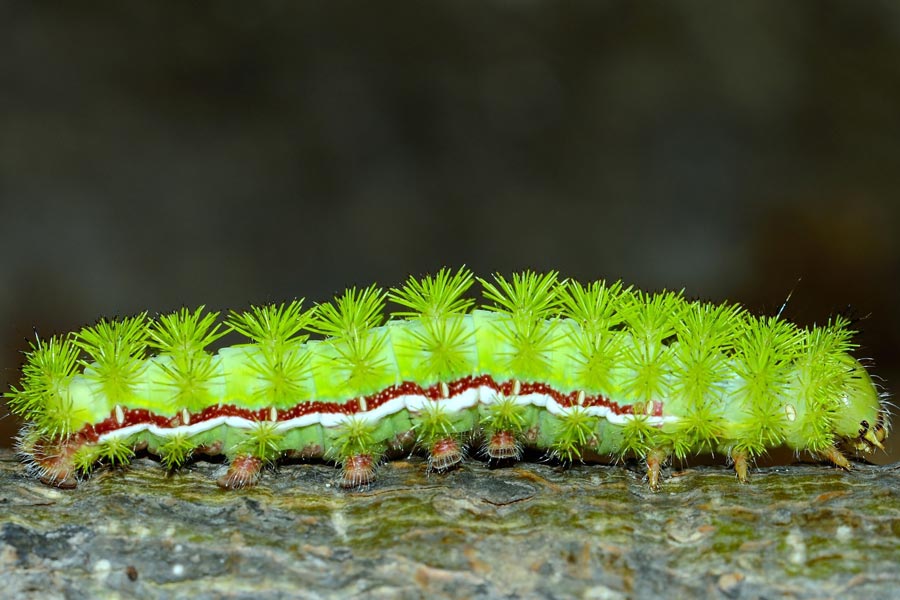Caterpillars are some of the planet’s most enchanting creatures, displaying various colors, patterns, and textures that help them survive until it’s time to pupate and become butterflies or moths. While most species are harmless, there are a number of caterpillars that pose a substantial threat to not only predators, but humans as well. Let’s take a look at just five of the world’s most toxic caterpillars.
1. Saddleback Caterpillar
Where: Eastern US

The saddleback caterpillar (Acharia stimulea) is native to the eastern US, proliferating in warmer and temperate climates of the region. Its name comes from the characteristic markings that look as though these toxic caterpillars are wearing a bright green saddle with a brown seat that matches the rest of its coloration. Irritating bristles called urticating hairs (common among many species of caterpillars, plants, and tarantulas) line the lower edges of the saddleback’s body and two fleshy horns on either end. These hairs hold venom, and human contact can cause painful swelling, rash, and nausea.
2. Puss Caterpillar

Where: Eastern US to Central America
The puss caterpillar (Megalopyge opercularis), like the saddleback, derives its name from its unusual appearance. Long hairs that call to mind a Persian cat or some other long-haired animal. These hairs, called setae, are actually venomous spines. Touching one will lead to a reaction that will make you instantly regret you did. An immediate rash will appear, followed by intense pain that some victims have described as being comparable to a broken bone or blunt force trauma. The pain can radiate to other areas connected to the wound site, and other symptoms include burning, swelling, nausea, headache, abdominal pain, blisters, and in severe cases, chest pain, numbness, or difficulty breathing.
3. Io Moth Caterpillar
Where: Southern Canada to Southern US

The io moth caterpillar (Automeris io) may seem like a friendly, fuzzy character. But behind those cheerful colors and bottle brush-like appendages all over its body lies an insidious threat. Just the slightest touch causes these appendages, called urticating hairs, to release a venom that can cause mild to very severe reactions in humans. Each of the hairs is punctuated by a black spine, which release venom when broken, usually inside the predator’s flesh. These spines can become embedded, causing further irritation beyond the initial sting.
4. Hickory Tussock Caterpillar
Where: Eastern North America

The hickory tussock caterpillar (Lophocampa caryae), unlike the others on this list of toxic caterpillars, has physical characteristics that all but shout at you to stay away. The body of this caterpillar is coated in white and black setae, with two long, black spears at either end. All these setae contain venom, which causes an itchy rash when released into human skin, the extent of which can vary depending on the person’s chemical makeup. In addition to being venomous, the hickory tussock is also poisonous. They store toxins from the plants it eats in its flesh and organs.
5. Bag Shelter Caterpillar
Where: South America

The bag shelter caterpillar (Ochrogaster lunifer) is without doubt the most toxic caterpillar on our list. These fuzzy beauties, like the others in this group, are covered in urticating hairs that release venom when touched. However, this venom has an even more dangerous element: a powerful anticoagulant. The slightest brush with the bag shelter caterpillar can result in internal and external hemorrhaging, and can be fatal if not immediately treated.
Featured Image from hagit berkovich/Shutter Stock




